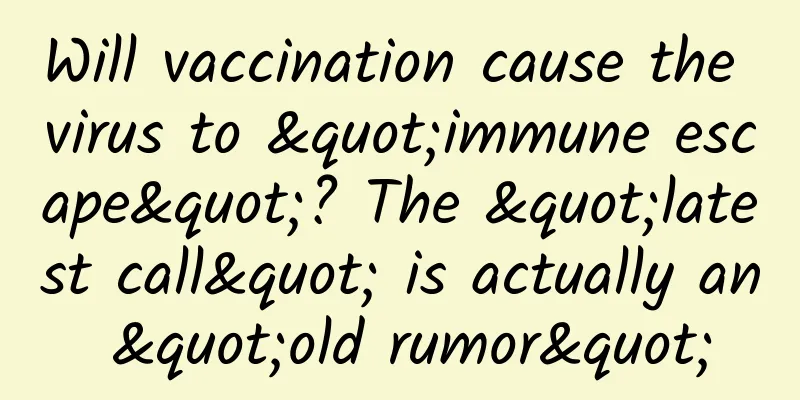Whisper of Blood: Stay Away from the "Silent Killer"

|
Whisper of Blood: Stay Away from the "Silent Killer" Silent Crisis Do you know what high blood pressure is? Have you ever paid attention to your blood pressure? Do you monitor it regularly? Do you worry or feel anxious because of changes in blood pressure? Why are there so many questions about high blood pressure? Because according to statistics, the prevalence of high blood pressure among people aged 18 and above in my country is 27.9%, and the number of people suffering from high blood pressure is about 245 million. In other words, one in every four adults is a high blood pressure patient. This also means that high blood pressure has become an extremely common chronic disease, silently threatening the health of many people. Therefore, high blood pressure is also called the "silent killer." Counter-investigation: Debunking the conspiracy of hypertension What should we do in the face of such a danger lurking around us? As the saying goes, "You must know yourself and your enemy before you can win every battle." So if we want to defeat high blood pressure and eliminate the potential dangers around us, we need to understand high blood pressure. When it comes to high blood pressure, we first need to know what blood pressure is. Blood pressure generally refers to systemic arterial blood pressure, which is the pressure that pushes blood forward in the arteries, and is also the lateral pressure exerted by blood on the arterial wall. How to understand it? We can imagine our blood vessels as a water pipe, and the water flowing through the water pipe is like the blood flowing in our body. If water wants to flow in a water pipe, it needs a force to push it forward. When water flows through the water pipe, if there is no water pipe to restrain it, the water will rush out of the water pipe, so the water squeezes the water pipe and applies a force to the water pipe. These two forces are called pressure. Then when the heart pumps blood to the blood vessels, it will give the blood a force to make the blood flow into the blood vessels. When blood flows through the blood vessels, the blood squeezes the blood vessels and puts pressure on the side walls of the blood vessels. These two forces are called blood pressure. Hypertension refers to a persistent increase in systemic arterial blood pressure. It is a common clinical syndrome that can cause changes in the heart, brain, kidneys, and blood vessels. Usually, adults with systolic blood pressure ≥140 mmHg and diastolic blood pressure ≥90 mmHg are defined as hypertension. Hypertension can be divided into primary hypertension and secondary hypertension. Primary hypertension is the most common cardiovascular disease in my country (accounting for 90~95%). It is an independent systemic disease with increased systemic arterial pressure as the main manifestation. Generally, middle-aged and elderly people are more likely to get the disease, but the incidence of the disease and its complications also varies between different genders and races. Secondary hypertension (accounting for 5%~10%) is less common. It refers to the increase in blood pressure that occurs when suffering from certain diseases. To truly understand hypertension, in addition to knowing what it is, we must also know the factors that cause it. Currently, in the medical field, hypertension is considered to be a disease caused by the interaction of genetic and environmental factors. It mainly includes the following factors: Heredity and gene factors. Studies have shown that hypertension has a clear hereditary tendency and family clustering. At least 20% to 30% of blood pressure variation in the population is determined by heredity. That is to say, at least 2 to 3 out of 10 hypertensive patients suffer from hypertension because of heredity. Therefore, if there is a history of hypertension in a family member, the risk of the disease will increase accordingly. Being overweight or obese is also a major factor in causing high blood pressure. Because of the excessive fat in the body, the heart load increases, and the heart needs more power to pump blood throughout the body, which leads to high blood pressure. In addition, obese patients may also have high blood pressure in other aspects due to obesity. High-salt diet and drinking are also significantly associated with the onset of hypertension. Studies have shown that the prevalence of hypertension in people with high daily salt intake is significantly higher than that in people with low daily salt intake. At the same time, moderate or above drinking is also one of the factors for the onset of hypertension. Social and psychological factors. Surveys show that people who are in a state of mental tension for a long time or repeatedly or who are engaged in related occupations will have persistent contraction-dominated excitement in their vasomotor center, which can cause spasms in small arteries throughout the body, increase peripheral vascular resistance, and raise blood pressure. Physical activity. Physical activity is negatively correlated with high blood pressure, which means that people who lack physical activity are at a higher risk of developing high blood pressure than those who are physically active. At the same time, studies have also found that physical activity has a blood pressure-lowering effect and can reduce the dose of antihypertensive drugs to maintain the blood pressure-lowering effect. In fact, high blood pressure is not terrible. What is really terrible is the series of complications caused by high blood pressure, such as arteriosclerosis, hypertensive heart disease, uremia, cerebral hemorrhage, etc. According to statistics, about 2 million people die from complications of high blood pressure in my country every year. 90% of patients with high blood pressure die from complications. These data are all shocking to us. All we can do is to take active prevention and stay away from high blood pressure. Fight high blood pressure with thunderous force my country has the largest number of hypertension patients in the world. One of the main reasons is that hypertension in my country is generally characterized by "three highs, three lows, and three noes". "Three highs" refers to high prevalence, high risk, and high growth trend. "Three lows" refers to low awareness, low treatment, and low control rates. The "three no's" are that people generally do not take medication regularly, do not insist on measuring blood pressure, and do not pay attention to non-drug treatment. Knowing where the problem lies, the most important thing is to correct the mistakes and change the status quo. Therefore, we must take active measures to prevent high blood pressure and make the "silent killer" unable to reach out its devil's hand to us. To effectively change anything, we must start from the root and prescribe the right medicine. Therefore, the following preventive measures are proposed based on the factors that cause high blood pressure: Limit sodium intake and eat a light diet. In addition, people with good kidney function can choose low-sodium and potassium-rich salt alternatives. Dietary management for people with high-normal blood pressure and hypertension should reduce the intake of salt and saturated fat, and increase the intake of protein, high-quality carbohydrates, potassium and dietary fiber. For overweight or obese hypertensive patients, weight control through comprehensive lifestyle intervention is recommended to reduce blood pressure and the risk of cardiovascular events. All smokers are advised to quit smoking and avoid using e-cigarettes as much as possible to reduce hidden hypertension and reduce the risk of cardiovascular disease. People with high-normal blood pressure and hypertension should limit their long-term drinking. For hypertensive patients with well-controlled blood pressure, mixed training with aerobic exercise as the main and resistance exercise as the supplement is recommended. It is also recommended to combine breathing training with flexibility and stretching training. Consider reducing mental stress through a variety of methods, including cognitive behavioral therapy, mindfulness and meditation, yoga, deep breathing exercises, etc. Patients with hypertension should maintain healthy sleep and improve sleep disorders. Whether or not you are a hypertensive patient, you should measure your blood pressure regularly. Patients taking antihypertensive drugs should take them regularly and on a long-term basis. Increase publicity so that everyone knows about hypertension and everyone takes measures to prevent it. Let us join hands and take responsibility for our own health starting from today. Start from the little things in life and stay away from the "silent killer". |
<<: What are the early symptoms of bone tumors? Is it pain, lumps, or other manifestations?
Recommend
Why do cars use synthetic oil? Does the engine need to be cleaned before changing to full synthetic oil?
Automobile motor oil is a kind of oil used for en...
How to keep abalone fresh? Why do we cook abalone soup with the shell?
Abalone is one of the precious "sea treasure...
What is the reason for the continuous bleeding in the lower body?
There are many reasons for continuous bleeding fr...
Dandruff never ends, is there no way to cure it?
Reviewer: Zhang Shuyuan, Chief Physician, Beijing...
What are the symptoms of leucorrhea in early pregnancy?
Under the influence of progesterone, female frien...
Women's 4 parts age the fastest
First place: buttocks Loose hips are just as terr...
What should I do if the right side of the chest collapses?
Right chest collapse is usually a hereditary dise...
Jia Haiwei, at which stages of retinoblastoma is eye-saving treatment suitable?
Retinoblastoma, also known as RB, is the most com...
The most severe symptom of menopause is
Female menopause refers to a special period when ...
What is the reason for a pimple on the genitals?
Generally speaking, women are very concerned abou...
I haven't had my period yet seven months after giving birth.
Menstruation is a sign of every woman. When a gir...
Can women take anti-inflammatory drugs during menstruation?
Menstruation is a best friend that women know ver...
Can pregnant women eat dried chili peppers?
As we all know, once a woman becomes pregnant, sh...
To do a good job of surgical care, these points should be remembered
In the clinical process, as a commonly used treat...
Follicle growth rate
For women, follicles are of great importance. As ...









